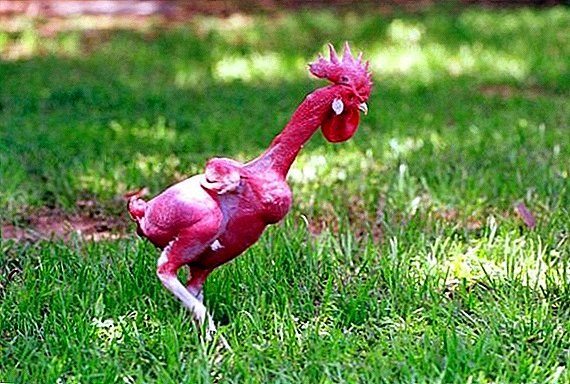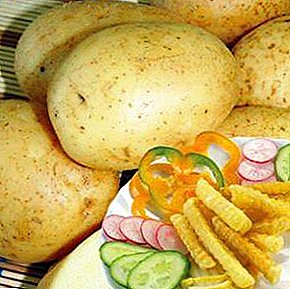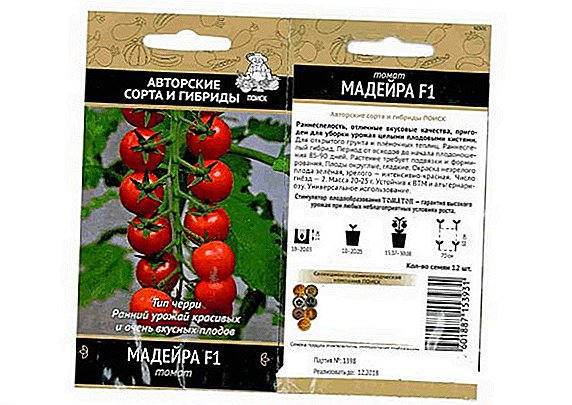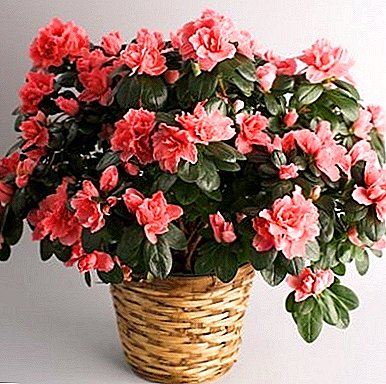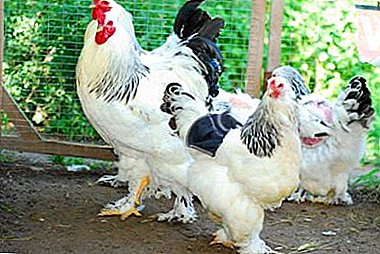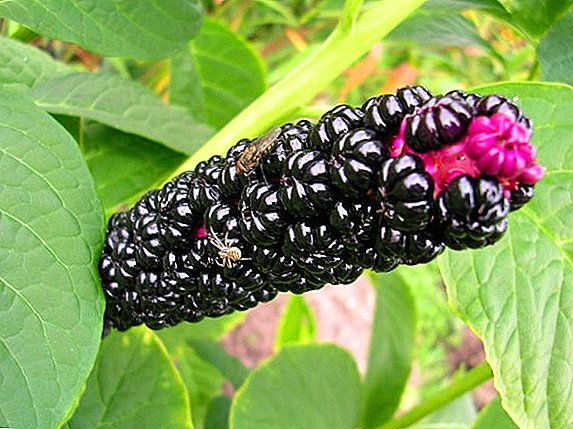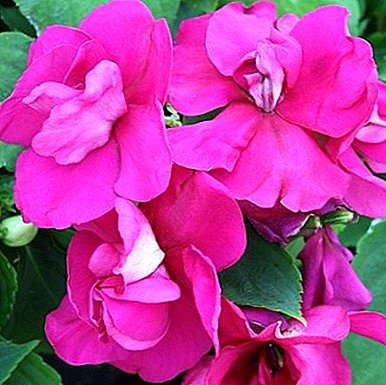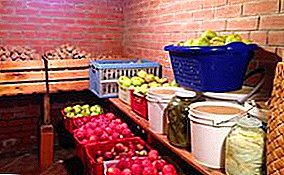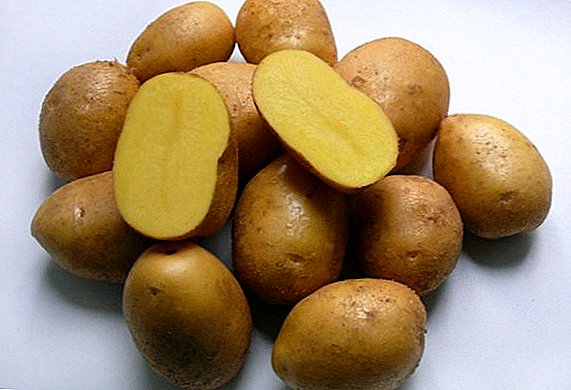 Coleus (from the Latin. "Coleus" - "case") - It is a perennial, evergreen, bushy plant that is grown for its bright leaves. It comes from tropical parts of Africa and Asia, and was introduced to Europe in the nineteenth century.
Coleus (from the Latin. "Coleus" - "case") - It is a perennial, evergreen, bushy plant that is grown for its bright leaves. It comes from tropical parts of Africa and Asia, and was introduced to Europe in the nineteenth century.
Did you know? Coleus is also called "nettle" because of the similarity of its stems and leaves with nettles; and the "poor croton" - due to the variegated color, similar to the croton, and the relative cheapness.This is a beautiful hardy plant with fast growth. Do not take the hassle of care.
Coleus Home: Popular Views
It was previously thought that about 150 species belong to the Coleus genus, but as a result of research and thorough revision It consists of only a few varieties.
 It has beautiful heart-shaped leaves, combining yellow, green, red and burgundy colors. The flowers are blue or purple. Species can be divided into those with edible tubers, flowering and decorative leafy. And their variety makes it possible to grow Coleus not only at home, but also in open ground (in summer). The first species known in Europe were Coleus Blume and Verschaffelt.
It has beautiful heart-shaped leaves, combining yellow, green, red and burgundy colors. The flowers are blue or purple. Species can be divided into those with edible tubers, flowering and decorative leafy. And their variety makes it possible to grow Coleus not only at home, but also in open ground (in summer). The first species known in Europe were Coleus Blume and Verschaffelt.
Did you know? A couple of years after the appearance, 18 new Coleus of hybrid origin were sold at auction in the UK for a colossal (at that time) amount.
Blume
This most popular type of coleus appeared thanks to the botanist Karl Blum. Happens from about. Java. Due to the fact that there are many varieties of short Coleus Blume, it is often used in landscape design. Although it may well reach 80 cm in height. Lignified shoots at the base, tetrahedral. Oval, elongated leaves of about 15 cm have carved edges and a variety of colors. Depending on the variety may have a different structure. The most popular varieties such as Butterfly, Volcano, Golden Beder.
Vershaffelt
A view similar to the above-described indoor flower, but with larger and variegated leaves, is called Vershaffelt coleus. It is also one of the largest coleus. It is characterized by high decorativeness. Velvety, dark red leaves have a bright pattern in the center and a green border. For cultivation in the open ground, the Hero varieties (with dark, almost black foliage) and Julia (with a beautiful golden border) are more often chosen.
How to choose the right coleus
 Regardless of whether you need a coleus for your home or garden, and the variety with which name you are going to purchase - pay attention to a few nuances. First of all, better to make a purchase in early spring. Secondly, the plant should be great (have a few strong shoots that grow from the roots).
Regardless of whether you need a coleus for your home or garden, and the variety with which name you are going to purchase - pay attention to a few nuances. First of all, better to make a purchase in early spring. Secondly, the plant should be great (have a few strong shoots that grow from the roots).
Do not buy a coleus with a small amount of shoots or about to bloom. After all, if there are few shoots, then the plant has an underdeveloped rhizome, and flowering indicates a permanent mineral dressing, respectively, exhaustion.
Growing coleus
Coleus can not be called difficult to grow and care of the plant. Although there are some rules that should be followed.
Do I need a transplant after purchase
After buying Coleus takes about a month to adapt to new conditions. Then it should be transplanted into a pot of slightly larger sizes with a suitable substrate for its development.
How to plant coleus at home
To plant a coleus at home, first find a suitable place for it. Since this is a light-loving plant, eastern or southern windows will do. The perfect solution would be a glazed balcony. Choose a plastic or ceramic pot, preferably cylindrical or tulip-shaped, not less than 15 cm deep.
Important! Substrate for planting should be loose, neutral or slightly acidic, consisting of humus, hardwood and sod land, as well as peat and sand (4: 4: 2: 1: 1). Install a drain at the bottom of the tank.
Basics of coleus care at home
 Coleus unpretentious, and taking care of them at home will not take much time.
Coleus unpretentious, and taking care of them at home will not take much time.
Make sure that the lighting is bright enough, without this the leaves will turn pale. But from direct sunlight plants need to be protected. Temperature condition should be within + 12 ° С- + 25 ° С.
How to water and fertilize a plant
Soft water is needed for irrigation, you can add a little ash. Water plentifully from spring to autumn and sprinkle with water at room temperature. In the autumn, watering reduces, but does not allow for the drying of the soil surface.
During the period of active growth make feeding every week. Suitable and mineral and organic fertilizers. Coleus responds well to potash (~ half a gram per liter of water).
Pruning coleus
Since during the winter the plant loses a lot of leaves and is drawn out, then take care behind the coleus you also need a trimming method. Leave a stump with 5-7 eyes. Shoots that will grow should be regularly pinned. Flower stalks are also better to remove if you do not plan to get your seeds.
Features care for coleus in the winter
 Winter for Coleus - a period of rest. In winter, the plant is rarely watered, but the roots are kept moist. Top dressing (mineral fertilizers) is applied 1 time per month. The temperature is reduced to + 12 ° С- + 15 ° С. Spraying stopped altogether to avoid the appearance of rot and fungal diseases.
Winter for Coleus - a period of rest. In winter, the plant is rarely watered, but the roots are kept moist. Top dressing (mineral fertilizers) is applied 1 time per month. The temperature is reduced to + 12 ° С- + 15 ° С. Spraying stopped altogether to avoid the appearance of rot and fungal diseases.
Reproduction Coleus at home
Reproduction of coleus at home is possible in 2 ways: seeds and cuttings.
Seeds are sown from February to April, leaving free space between them, and sprinkled with earth or sand. Maintain a temperature of + 20 ° C- + 22 ° C and water frequently. After 2-2.5 weeks, the entrances should appear. When the sprouts grow up and it becomes crowded, do a pick in 9-11 centimeter pots. Provide good lighting and watering. When young plants reach 10 cm, they are pinched for the first time. Using seeds, you can get copies with unpredictable foliage color.
If you want to keep the color of Coleus, then it is better to propagate it by cuttings. From February to May, 10-centimeter twigs with cut-off lower leaves are planted in sand, soil, or put just in the water, cover with a film and clean in a place with a temperature of + 18 ° C- + 20 ° C. The cuttings will take root in 8-12 days and then they will be planted in permanent pots. It is necessary to pinch the top and ensure irrigation, ventilation and temperature in + 16 ° C- + 18 ° C.
Important! In case of excessive sunshine, the edges of the leaves will twist and the color will turn pale. With low daytime and high night temperatures, foliage will also discolor.
 In this article, we have described such a bright plant as Coleus, told about him species, cultivation, home care and breeding. This beautiful and not capricious plant can become an ornament of your house or garden, it will not take you much care, and a wide choice of varieties will give the opportunity to satisfy any requests and preferences.
In this article, we have described such a bright plant as Coleus, told about him species, cultivation, home care and breeding. This beautiful and not capricious plant can become an ornament of your house or garden, it will not take you much care, and a wide choice of varieties will give the opportunity to satisfy any requests and preferences.

